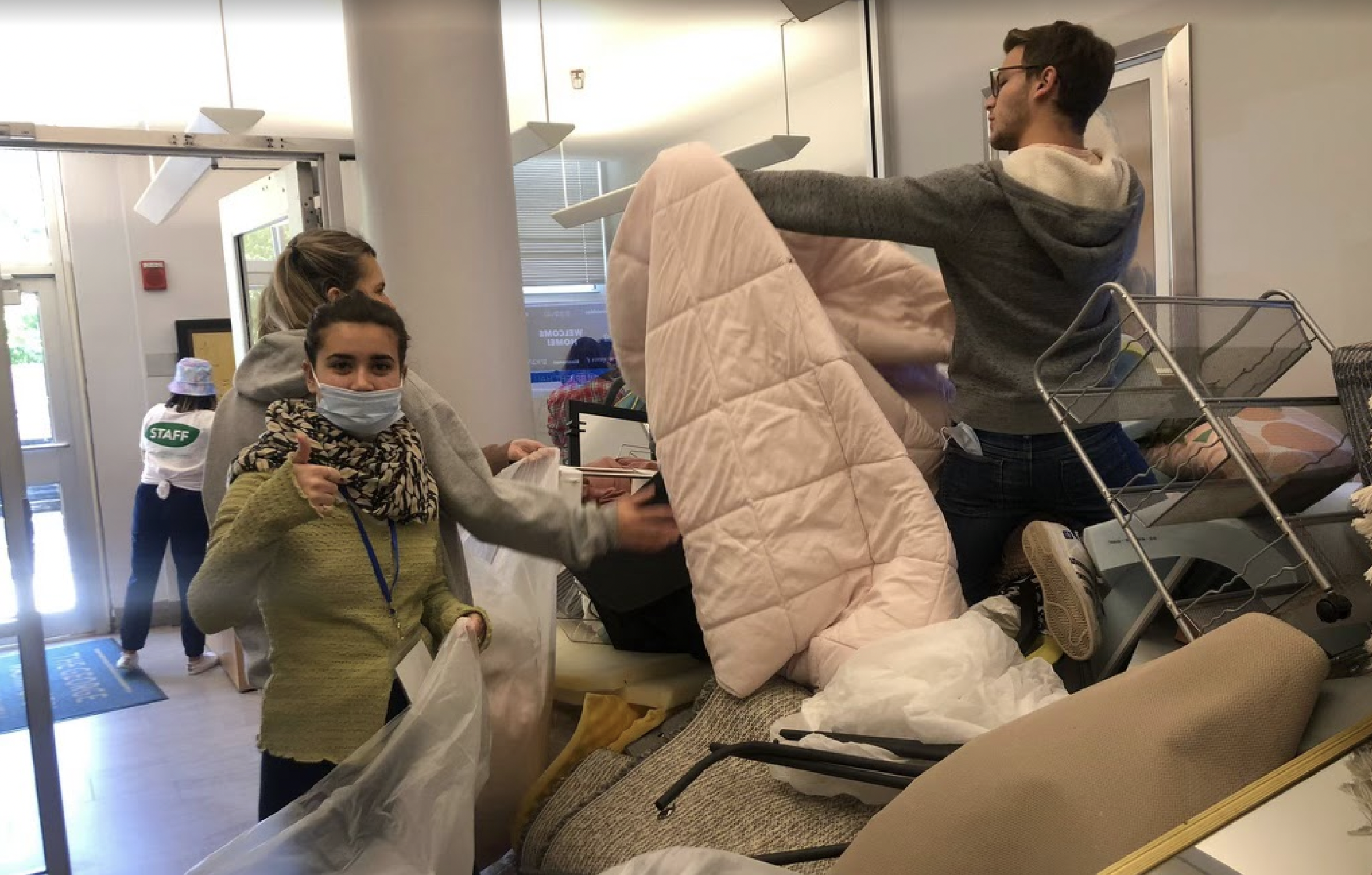By Greg Varner
When it comes to environmental sustainability, the George Washington University community does more than talk the talk. During this year’s Green Move-Out, students vacating their residence halls donated 45,000 pounds of clothing, 6,000 pounds of household goods and 2,100 pounds of food for distribution and reuse.
The annual Green Move-Out is sponsored by GW’s Office of Sustainability. This year, 58 volunteers worked for a combined 472 hours to sort and bag reusable items. A total of 53,000 pounds—more than 26 tons—were collected, diverting 11 truckloads from the landfill.
According to Colin O’Brien, sustainability specialist in the Office of Sustainability, this year’s successful Green Move-Out set a record for donations received.
“We recruited an incredible team of volunteers and collected more donations than ever before, the overwhelming majority of which will benefit individuals and families right here in D.C.," O’Brien said.
Sustainability is about more than the environment as often conceived, according to Kimberly Williams, stakeholder engagement associate.
“Sustainability is not just about the environment,” Williams said. “It’s also about the economy and equity, and this program represents that. Instead of using a shower caddy, mirror, or other item for only a year and then throwing it in the trash, our students give things new life by donating.”
After sorting donated goods for reuse, volunteers load them on the trucks of community partners such as Habitat for Humanity of Metro Maryland, Bread for the City, Green Drop, Love and Light and several other organizations.
Rising senior Adam Esrig, majoring in political communication and political science in the School of Media and Public Affairs, was primarily motivated to volunteer in order to stay longer in his residence hall. After exploring the options open to students seeking a later deadline for moving out, he chose to volunteer for the Green Move-Out because it was compatible with his schedule and allowed him to contribute to waste reduction at GW in a tangible way.
“I'd gladly help out again in the future,” Esrig said. “We achieved a lot in only a few short days. With more awareness of the cause and greater emphasis on student participation, our school can do even more in the future to reduce waste on campus and assist community members in need.”
In a written statement, GW’s director of the Office of Sustainability, Josh Lasky, B.A. ’07, M.P.A. ’09, praised Green Move-Out’s nonprofit and campus partners for “doing incredible work to provide support and resources to our neighbors experiencing food insecurity, homelessness, and other challenges.”
This year, approximately 1,800 large bags of clothing were hauled away, along with roughly 115 cartloads of household goods and about 700 paper grocery bags full of food. Frequently donated items include articles of clothing, household goods such as storage units and drawer organizers, and even printers. Canned goods and dried goods such as pasta, oatmeal and popcorn are also commonly collected items.
In simple economic terms, this represents a savings of more than $17,000 in waste disposal fees and labor costs. Diverting items from the landfill is good for the climate, since they can emit greenhouse gases as they decompose. The items hauled away are then donated to individuals and families in need.
“Our vision is healthy and thriving resource systems for all,” Williams said, “and we work to promote a culture of sustainability on campus. To realize our vision, we do work ranging from working towards carbon neutrality, to promoting a zero-waste campus, to engaging with students and educating them in the sustainability minor. We also work with researchers across campus to innovate solutions to sustainability challenges.”
Reusing items also leads to savings on the energy, material, and cost of producing or acquiring replacements.
“It’s really important to think about how much waste we produce,” Williams said, “and how we can create a culture in which our community is more mindful of the amount of stuff we use and the amount of stuff we throw away. Our impact ripples beyond Foggy Bottom. We make an impact on the local, regional and global scale.”



